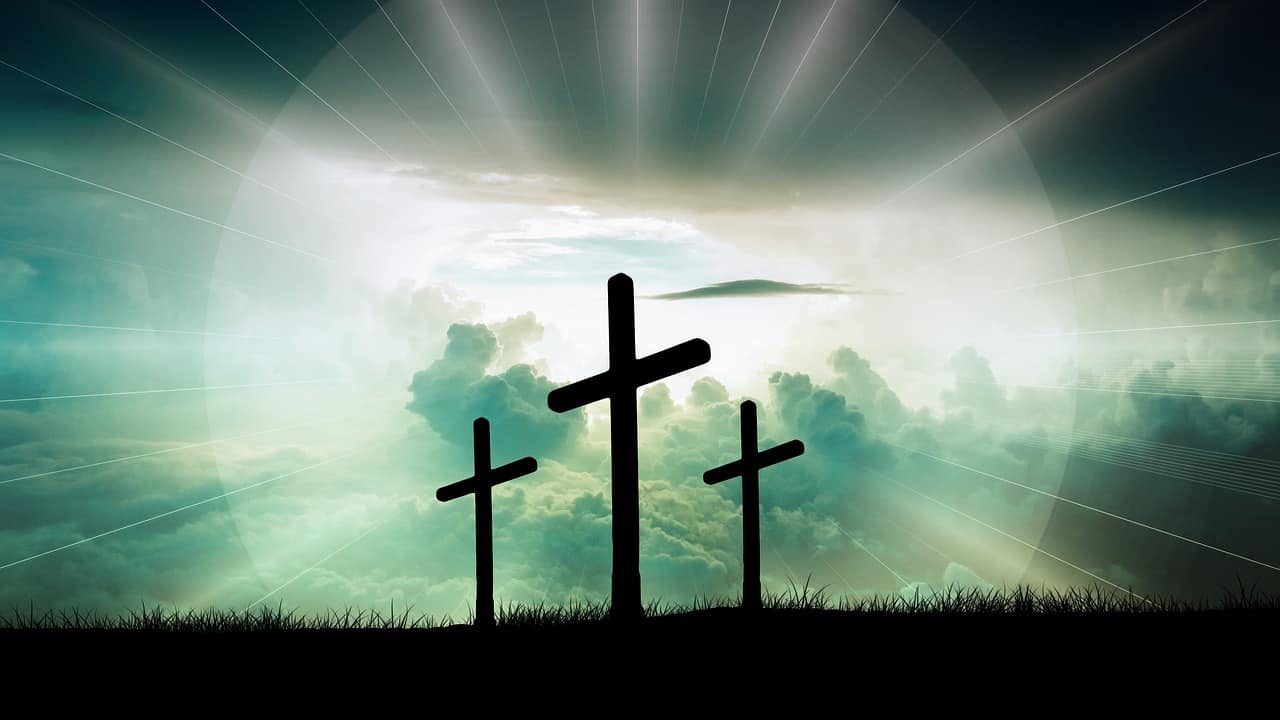Easter is the greatest feast of the Christian year. Death has not had the final say. Christ has conquered the grave and has risen to new life. We have been imbued with the hope that we, too, might share in this life eternal. Alleluia!
But one would hardly know this outside of our churches, out in the streets where it is harder for the Gospel to penetrate. Our Lenten season is marked by many external signs that signal our faith to others. From our Ash Wednesday services, we stream forth from our parishes prominently marked on our foreheads. On Palm Sunday, we process towards our parishes from a nearby area and then return to our homes carrying yellow branches, whether held prominently in our hands or tucked into our purses.
These symbols, however, cannot compare to the vivid message that my parish’s live stations of the cross broadcasts to my neighborhood. Each year, hundreds of parishioners stage a Via Crucis一or way of the Cross一in the streets of Little Italy in the Bronx. The whips and shouts of the soldiers, along with the cries and prayers of the women, bring the Passion to life in a way that captures our attention. We routinely hear that Christ suffered and died for our sins. Seeing and feeling the drama makes this price palpable.
The procession also makes the story public. I noticed cafe-goers set their cappuccinos down to take in the passing scene. Streetside diners paused their meals and ceased their laughter. The neighborhood fish market entered an eerie calm. Cars gave way to the procession一and, by some New York miracle, did not blare their horns (…that much).
I’m not sure if it’s simply the massive throng of people that precipitated such an interruption from the otherwise routine life of the neighborhood. Or maybe it was the solemn subject matter of Good Friday. In any case, while the Passion is so familiar to perennial churchgoers, it struck me that many might be exposed to this central Christian story for the first time through this public procession.
And what did they see? An innocent man condemned to die, who was tortured and whipped, and died a brutal death alongside criminals. And we proclaim this man to be the Son of God, who did all this in the name of our sins.
There is no problem here. It is necessary that we Catholics share with all corners of the world that we have a God who suffers for us. We are not alone in our inevitable sufferings as human persons because our Creator has suffered one of the worst deaths imaginable一all while being blameless. Although we are imperfect by nature, our shortcomings do not define us. Our sins are forgiven and need not forever haunt us.
The problem is that this is not the end of the story. Inside our churches, we celebrate the joy of Easter. The light dramatically returns to our parishes in the Easter Vigil. We triumphantly belt out our alleluias after holding them in for 40 days. New members of our congregations are initiated with the sacraments. But why don’t we proclaim this outwardly in the streets?
Sure, we have Easter egg hunts in neighborhood parks and schools. Families might enjoy special dishes from recipes passed down for generations or purchased from a favorite market. We dye eggs as we gather for family luncheons. However, such signs fail to communicate the radical reality of the Resurrection.
We Christians have Good News in a world that is desperate for light and hope: that our life in this world is not all that there is, that God has power over the grave, and that our God now lives forever. For me, though, the best news of the Resurrection is that our faith is really real. Christianity is not merely some collection of moral stories and wisdom passed on from ages past. I think that the fact that the Church exists today is proof that Jesus did indeed rise from the dead.
I have imagined myself in prayer as one of Jesus’ disciples. I picture myself at Calvary, dazed and confused at the situation while pondering the last few years of my life. Why did I leave home, my family, and my profession to follow this man who just surrendered? How could this person who I saw raise Lazarus from the dead submit himself to this torture? Was this rabbi just a wise teacher and nothing more?
I simply do not think that Peter, Paul, and the apostles would have had the strength and courage to undergo such daring missionary journeys crisscrossing the Mediterranean if Jesus’ ministry had ended in humiliating defeat. One does not sacrifice his life for a lie. The only way it makes sense to me that the first disciples would continue to devote their entire lives to this missionary project was if Jesus truly had risen from the dead.
These ancient stories of death and resurrection continue to take root in each time and place, providing ultimate meaning and purpose to our lives. Each generation has heard this story and repeated it to their children because they somehow have also come to believe that the Son of God lives. I argue that this is because in each act of belief and in each act of telling, we receive an inexplicable joy that can only come from God. When we have that eureka moment, that instant of faith in which we profess that Jesus truly rose from the dead, our hearts explode with happiness. Our minds shatter trying to piece together the implications for our lives as we recognize that this Jesus was truly the Son of God who came to earth to show us the way.
Sharing this realization with others amplifies and refreshes that joy that originally welled up in us at our first Easter. Therefore, we should not hide this joy inside our parishes. It need not be its own public procession. We can simply share this story in our workplaces and with our friends. Evangelization can merely be an “offer of joy,” as the Jesuit General Fr. Arturo Sosa dubbed it.
Our Lenten practices and processions allow us to better enter the Paschal Mystery and to understand the depths of God’s love for us. But those sipping their lattes in our neighborhood cafes miss out on the source of eternal happiness if we never put the Resurrection一or our own joy一 on display either.


